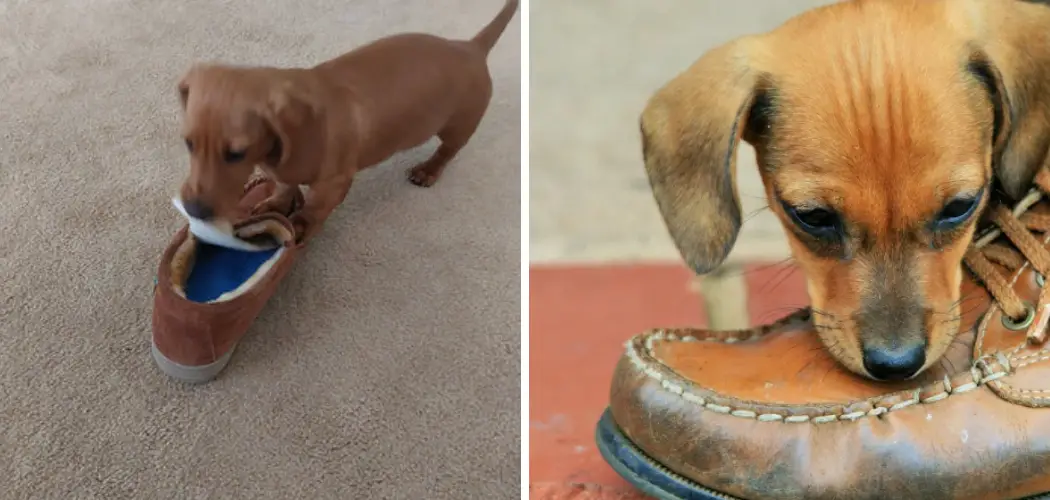Are you tired of coming home to find your favorite shoes destroyed by your furry friend?
How to get your dog to stop chewing shoes can be a challenging yet achievable task. Shoes may be enticing to dogs due to their texture or the comforting scent of their owner’s feet. However, it’s important to address this behavior before it becomes a habit that is hard to break. The process requires patience, consistency, and a positive reinforcement approach. By understanding the root causes of this behavior and providing suitable alternatives, you can help your furry friend develop better habits.
This guide will offer practical tips and techniques to redirect your dog’s chewing to more appropriate options while ensuring they remain a happy and well-behaved household member.
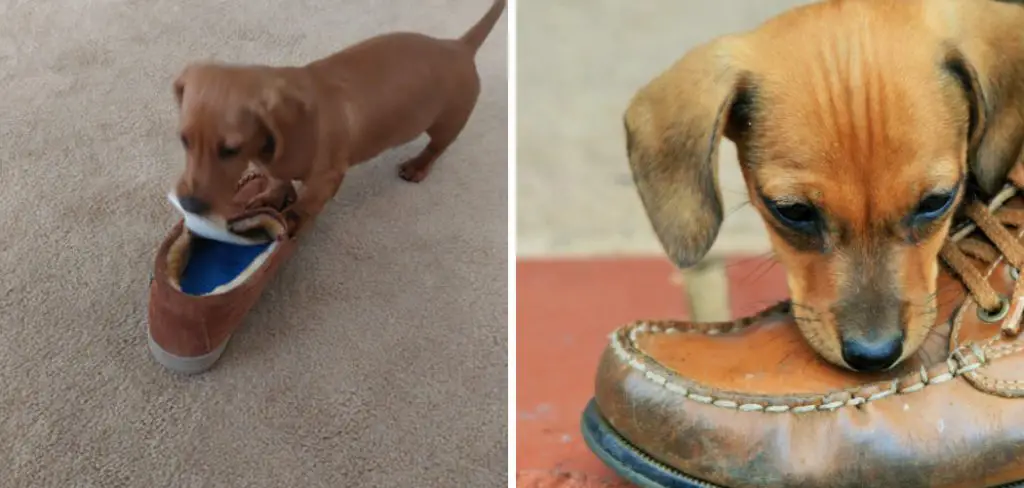
What Will You Need?
Before you begin training your dog to stop chewing shoes, here are some essential items that will come in handy:
- Appropriate Chew Toys: Make sure you have a variety of durable and safe chew toys for your dog. Look for options that are specifically designed for aggressive chewers.
- Bitter Spray or Deterrent: This can be useful as a temporary measure to discourage your dog from chewing on shoes. Its unpleasant taste can deter the dog from continuing the behavior.
- Treats: Positive reinforcement is key in training dogs. Have some tasty treats on hand to reward good behavior immediately.
- Patience and Consistency: As with any training, patience and consistency are crucial for success. It may take some time, but your dog will eventually learn to stop chewing shoes with a consistent approach.
10 Easy Steps on How to Get Your Dog to Stop Chewing Shoes
Step 1. Identify and Remove Temptations:
The first step in preventing your dog from chewing your shoes is eliminating temptations. This means ensuring all footwear is properly stored away, out of your dog’s reach. Consider using a shoe rack with doors or placing shoes in a closet. Not only does this keep your shoes safe, but it also reduces the chances that your dog will succumb to the temptation of chewing them.
Additionally, you should pay attention to where your dog tends to find shoes and address those areas by restricting access or reinforcing containment barriers. By removing the physical access to shoes, you set the stage for successful redirection and behavioral adjustment.
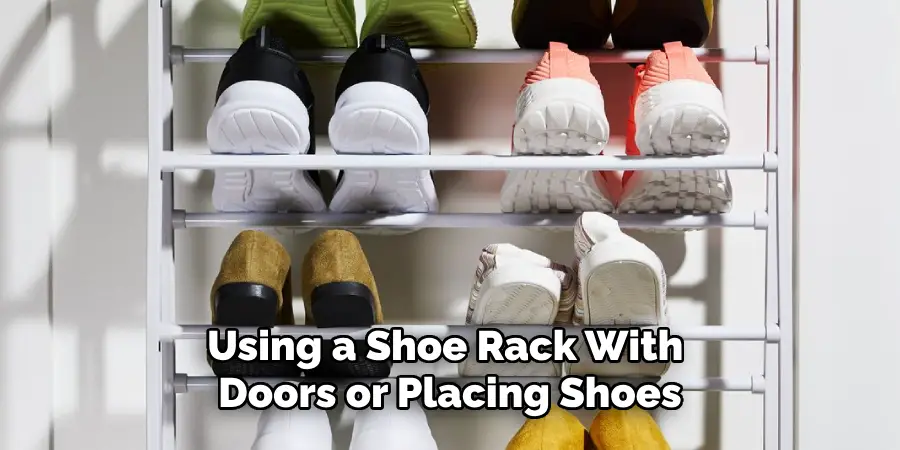
Step 2. Provide Plenty of Chew Toys:
Ensure your dog has access to safe and appropriate chew toys to keep them occupied and away from your shoes. Dogs naturally need to chew, so offering various textures and types of toys can satisfy their instinctual needs. Rotating the toys regularly will keep things fresh and maintain their interest. When you see your dog chewing on a shoe, calmly redirect them to their chew toy and encourage them to play with it instead. Reward them with a treat and positive reinforcement when they choose the toy over the shoe.
Step 3. Use Positive Reinforcement:
Positive reinforcement is a powerful tool in training your dog to stop chewing on shoes. Whenever your dog selects a chew toy over a shoe, praise them and provide a treat to reinforce the desirable behavior. This immediate reward system teaches your dog that choosing the toy results in positive outcomes.
Consistently apply this technique to associate good behavior with positive reinforcement; over time, your dog will develop a preference for chew toys over shoes. Remember, the key is to reward the behavior you want to see more of, and with patience, your dog will learn to make better choices.
Step 4. Introduce Bitter Sprays or Deterrents:
Incorporate bitter sprays or deterrents as a temporary solution to prevent your dog from chewing on shoes. These products are typically safe and designed to have an unpleasant taste that discourages dogs from continuing the behavior. Apply the spray on shoes or other objects your dog is tempted to chew. It’s important to note that this method works best with positive reinforcement and redirects your dog’s focus toward appropriate chew toys.
Be sure to follow the instructions on the product and test it in an inconspicuous area to ensure it won’t damage your shoes. Using deterrents alone is not a long-term solution, but it can effectively supplement your overall training strategy.
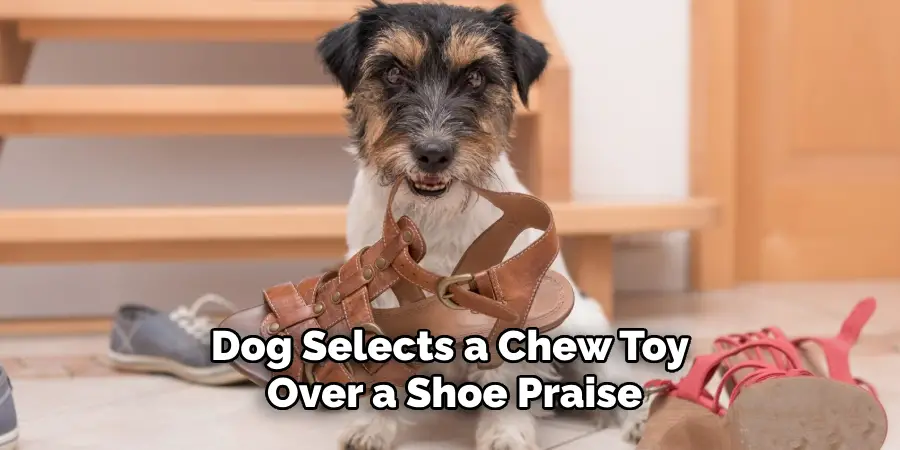
Step 5. Establish a Routine and Supervise:
Establishing a daily routine and providing adequate supervision can significantly help curb your dog’s shoe-chewing habits. Ensure your dog has set times for feeding, walks, play, and rest. This structure can reduce anxiety and boredom, which are often triggers for destructive behavior like chewing. When you are at home, monitor your dog closely and redirect their attention away from shoes if they begin to show interest.
Gates or playpens should be utilized to limit access to certain areas of the house where shoes are stored. A well-supervised and structured environment encourages positive habits and lessens opportunities for your dog to indulge in shoe chewing.
Step 6. Ensure Regular Exercise and Mental Stimulation:
Regular exercise and mental stimulation are essential components of a balanced lifestyle for your dog, and they can significantly reduce the incidence of unwanted chewing. Dogs with sufficient physical activity are less likely to engage in destructive behaviors from excess energy and boredom. Engage your dog in daily walks, play sessions, or interactive games that challenge their minds and bodies.
Incorporate activities like fetch, tug-of-war, and puzzle toys to keep your dog mentally occupied. Maintaining a consistent exercise routine and providing enriching experiences’ll help your dog expend some energy and diminish their need to chew on inappropriate items like shoes.
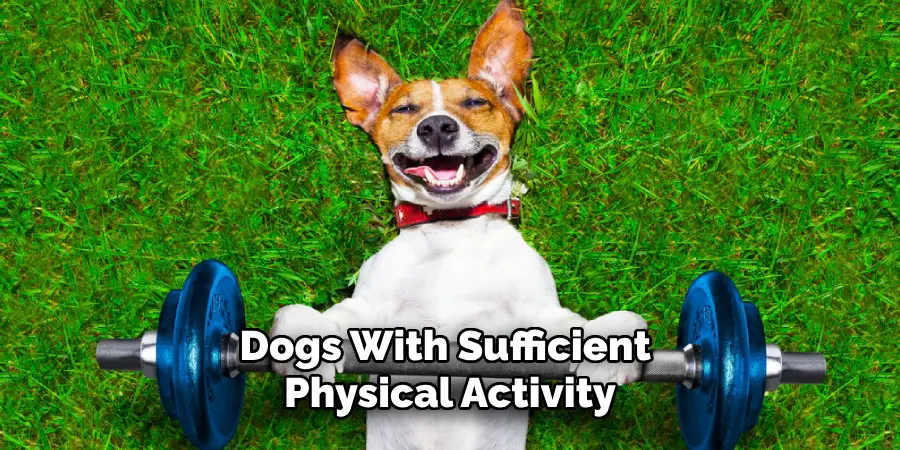
Step 7. Seek Professional Guidance if Needed:
If your dog’s shoe-chewing behavior persists despite your efforts, it might be time to seek professional guidance. Consulting with a certified dog trainer or behaviorist can provide you with tailored advice and techniques to address the issue effectively. These professionals can assess your dog’s behavior patterns, identify potential underlying causes, and offer specialized training plans to help curb destructive chewing.
Sometimes, professional intervention provides insights that may not be immediately apparent and equips you with strategies to achieve long-term improvement. Remember, seeking help is a proactive step towards ensuring your dog’s well-being and the preservation of your belongings.
Step 8. Patience and Consistency:
Patience and consistency are paramount in training your dog to stop chewing on shoes. Behavioral changes do not happen overnight, so it’s crucial to remain committed to the techniques and strategies you have implemented. Consistently applying the same methods reinforces their effectiveness and gives your dog a clear understanding of expectations.
Keep interactions positive and encouraging, even when progress seems slow. Remember that your dog’s behavior is shaped over time, and with continuous effort and unwavering patience, you can help them develop new habits and leave shoe-chewing behind.
Step 9. Evaluate and Adjust Training as Needed:
Periodic evaluation and adjustment of your training techniques are crucial as your dog progresses. Observe your dog’s behavior over time to identify any patterns or areas where they may still struggle. Being attentive to these details allows you to fine-tune your approach. Be open to trying new strategies if the current methods are not yielding the desired results.
Flexibility in training ensures that you accommodate your dog’s unique needs and address any specific challenges they may face. Regularly reviewing progress allows you to celebrate successes and determine the most effective path forward, helping solidify the habits you’ve been working hard to instill.
Step 10. Reinforce with Positive Socialization:
Incorporating positive socialization into your dog’s routine can help address shoe-chewing behavior by gently teaching them the boundaries of appropriate interaction with household items. Regular socialization with other dogs and people can -driven behaviors, including unwanted chewing. Consider enrolling your dog in obedience classes or organizing playdates with well-behaved dogs to provide opportunities for healthy social interaction.
Frequent exposure to different environments and scenarios encourages your dog to learn and adapt, fostering better overall behavior.
As your dog becomes more comfortable with social settings and develops more vital communication skills, you’ll likely notice an improvement in their ability to focus and less interest in inappropriate chewing.
By following these 10 steps, you’ll be well on your way to curbing your dog’s shoe-chewing behavior successfully.
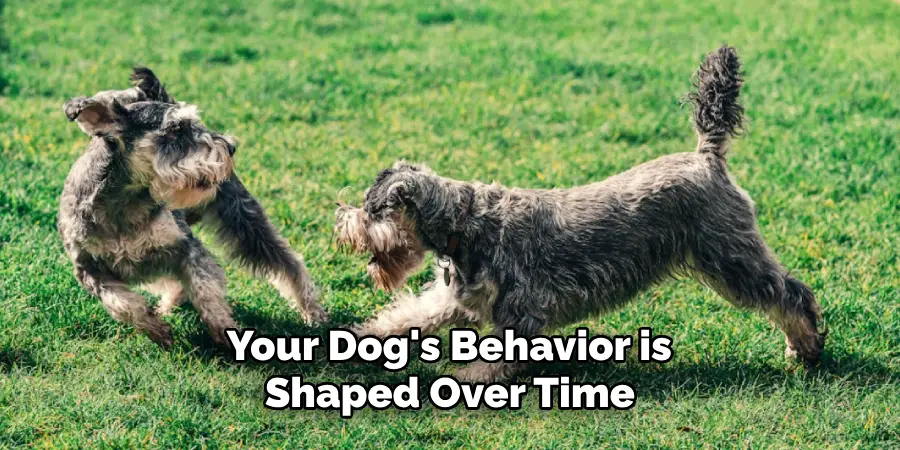
Conclusion
How to get your dog to stop chewing shoes involves a multifaceted approach that encompasses training, providing appropriate outlets for energy, and fostering consistent routines.
By understanding the root causes of their behavior, such as boredom, anxiety, or curiosity, you can tailor solutions that effectively redirect their focus away from shoes. Implement preventative measures by storing shoes out of reach, utilizing deterrents, and reinforcing positive behavior with rewards. Equally important is establishing a structured environment through set routines and regular exercise, combined with mental stimulation to keep your dog engaged and content.
Persistent application of these techniques, patience, and consistency will guide your dog towards more desirable behaviors. Professional guidance is available if needed, offering expertise that can accelerate progress.
With dedication and understanding, you can successfully end the shoe-chewing habit and strengthen the bond with your dog through positive reinforcement.

